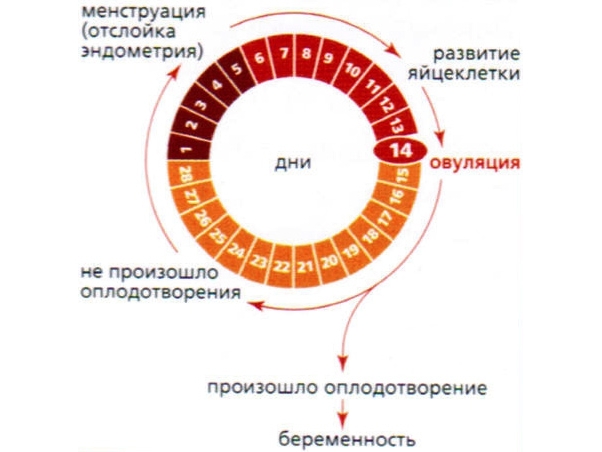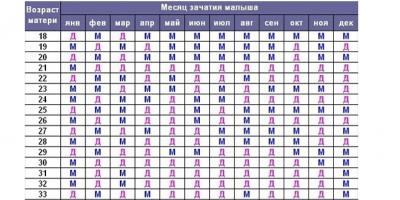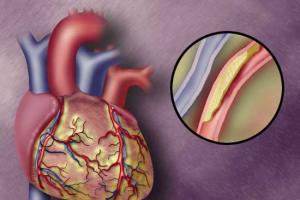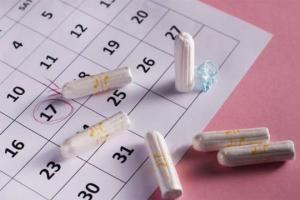What is considered a normal menstrual cycle, how many days normally last - information that every girl should know and remember. Any woman is familiar with such a concept as the menstrual cycle, because women's health depends on the well-established work of this mechanism.
Medical terminology refers to the menstrual cycle as changes that periodically occur in the body of a woman of reproductive age for the possibility of conception. For the first time, such changes appear in a girl during puberty. Depending on the individual characteristics of the female body, age can range from 11 to 16 years. These numbers are the norm. The hereditary factor also plays a role: menstruation begins at that age, as it was with mom or grandmother.
Menarche is the first menstrual cycle in a teenager's life. Menarche is a kind of starting point and indicates the readiness of the girl's body to perform the reproductive function. If menstruation does not occur at the age of 17-18 years, you should urgently seek advice from a gynecologist. There may be violations in the performance of the reproductive system, which is fraught with various negative consequences. The end of the reproductive period is menopause, which occurs between the ages of 40 and 50.
The normality of the menstrual cycle, first of all, lies in its regularity.
The menstrual cycle occurs monthly in a healthy female body, its ideal duration is 28 calendar days.
Duration is considered from the first day of one menstruation to the first day of the next. Normative indicators vary within plus / minus 7 days. This means that a normal menstrual cycle can be approximately 21 to 35 days. The reason for such variations can be various factors: stress, great physical or psychological stress, changes in weather conditions or climate.
The duration of the menstruation itself can be from 3 to 7 days, which is the norm from a medical point of view. The first two days there are abundant discharge, then their number is significantly reduced.
In fact, blood loss during menstruation is negligible and averages from 20 to 50 ml per day. The body of a woman after such blood loss recovers very quickly. Menstrual blood is red and characteristically does not clot. If more abundant and prolonged menstruation is observed, it is necessary to make an appointment with a gynecologist. This may indicate violations in the work of the female body. It should be remembered that an important point of a normal menstrual cycle is its constancy. That is, if menstruation begins every 30 days, this is normal. You need to worry if one month the cycle duration is, for example, 28 days, the second - 35 days, then, for example, 20 or 40 days.
Periods of the menstrual cycle
 Each menstrual cycle of a woman shows the readiness of the body for pregnancy. By its nature, the monthly cycle goes through three phases:
Each menstrual cycle of a woman shows the readiness of the body for pregnancy. By its nature, the monthly cycle goes through three phases:
- follicular;
- ovulation;
- luteal.
follicular phase. This period indicates the end of menstruation and the cessation of discharge. There is a synthesis of hormones of the pituitary and hypothalamus, which directly affects the ovaries. The result of this influence is the production of the sex hormone estrogen by the ovaries, which prepares the uterus to accept the egg. The duration of the follicular period is approximately 14 days.
ovulation phase. Ovulation is the day when the chance of conception is at its highest. During this period of time, a mature egg leaves the follicle and goes to the uterus, waiting for fertilization. The life span of the egg is negligible, it dies after 2 days. Also during the period of ovulation in the uterus, the process of preparing the epithelial layer for pregnancy takes place.
luteal phase. At the final stage of the menstrual cycle, a corpus luteum is formed from a burst follicle. This gland begins to produce the hormone progesterone. The main function of progesterone is to introduce a fertilized egg into the wall of the uterus. The absence of a fertilized egg leads to a decrease in the amount of progesterone and rejection of the epithelial layer. Thus, the cycle ends and a new period begins. The luteal phase lasts approximately 16 days.
Fading of childbearing function
Childbearing function ends in the same way as it began. There are delays, the menstrual cycle becomes irregular. The ovaries are unable to grow follicles that can reach the ovulation period. As a result, the corpus luteum functions worse and worse. The cycle length is extended. The period of extinction of the reproductive function is called menopause. If there is no menstruation for more than six months, a woman should consult a doctor. Thanks to the examination and the passage of ultrasound, it is possible to identify the onset of menopause and, with the help of drugs, facilitate its passage.
Often, the absence of menstruation for a long period frightens young women (35 to 40 years old), as thoughts of an early menopause begin to appear. This can be only temporary and manifest as a result of constant fatigue, stress and problems. As a rule, in such cases, proper rest helps the menstrual cycle to recover.
The main thing is not how many days is the duration of menstruation and the cycle itself, but how this period proceeds.
Any irregularities, pain, discomfort are a reason to contact a gynecologist. The golden rule of every woman should be regular gynecological examinations. This is the key to women's health.








